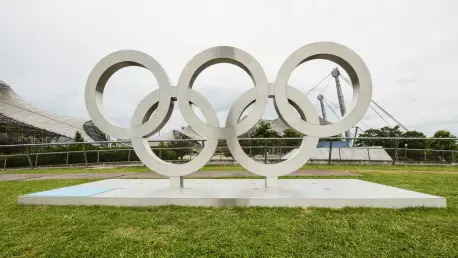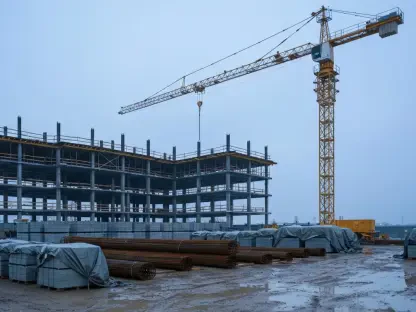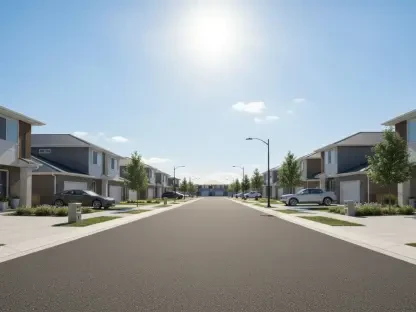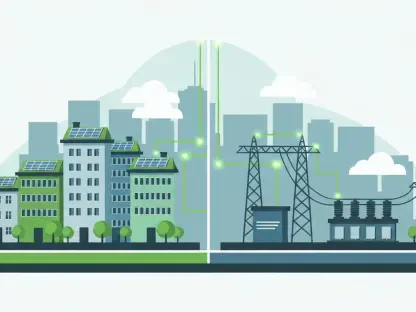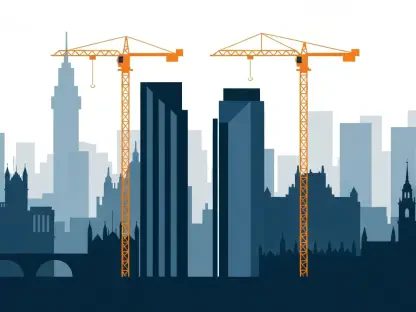Brisbane is gearing up for a transformative period in its commercial property landscape as the city prepares to host the 2032 Olympic and Paralympic Games. With less than a decade to go until the renowned event, significant strides are already being made in terms of strategic growth and infrastructure investment, setting the stage for a substantial reshaping of Brisbane’s inner areas. The developments are set to foster an environment ripe for mixed-use commercial, residential, and retail projects. Central to this change is the identification of what experts are calling the ‘golden rings,’ or the key precincts expected to reap the benefits from the anticipated Olympic-driven developments. As part of this transformation, notable areas such as the zones around the upcoming Victoria Park Stadium in Herston, the proposed Athletes’ Village in Bowen Hills, and the National Aquatic Centre in Spring Hill are under careful strategic analysis. The proximity of these areas to the Central Business District (CBD) positions them to become dynamic urban hubs, heralding a new era of revitalization and increased urban density.
Strategic Precincts and Infrastructure Upgrades
The identification of strategic precincts, dubbed the ‘golden rings,’ offers a glimpse into the future shape of Brisbane’s urban environment. The focus on infrastructure enhancements will play a pivotal role in facilitating this massive transformation. Among the key projects underway is the upgrade to Exhibition Station, expected to channel increased foot traffic into Fortitude Valley and Bowen Hills, fostering economic activity in these areas. Moreover, the upgrade of Fortitude Valley Station, coupled with the introduction of new pedestrian links to Victoria Park, is anticipated to fuel growth corridors along prominent streets such as Anderson Street, St Pauls Terrace, Warry Street, and Gregory Terrace. These developments aim to strengthen connectivity and accessibility, making these precincts attractive to both local businesses and investors. The commitment to connecting strategic precincts with improved transport links is further emphasized through enhanced accessibility initiatives, making it easier for businesses and residents to traverse the city efficiently. The anticipated upgrades are poised to catalyze commercial growth, thereby increasing the area’s value in the process.
The transformation doesn’t stop there. Growth initiatives in related areas are set to expand the broader urban landscape. Spring Hill, for instance, promises to undergo a significant revival, with Boundary Street being proposed as a vibrant community center and Astor Terrace earmarked as a burgeoning dining hub. Similarly, improvements in the Roma Street precinct are expected to increase demand for both office and retail spaces, driven by a boost in connectivity. In Herston, increased investments and infrastructure projects are set to support higher-density residential developments alongside medical-oriented commercial spaces. Notably, better transport links are likely to elevate demand for logistics, warehousing, and last-mile distribution centers in key fringe areas. This entire strategic approach is not just about the Olympics itself but about making Brisbane a more livable, connected, and economically vibrant city, and these steps position the urban landscape to thrive well into the future.
Long-Term Investment and Urban Renewal
The anticipated surge in investment and development activities in Brisbane leading up to the 2032 Olympics mirrors trends observed in other cities previously hosting such global events. An overarching theme is evident: these Olympics will not only serve as a world-renowned sporting occasion but will also act as a catalyst for urban renewal. They are projected to markedly enhance infrastructure and public transport systems, fundamentally altering Brisbane’s commercial property landscape. Insights from experts like Colliers Queensland Chief Executive Simon Beirne and researcher Pragya Sharma highlight an exciting convergence of infrastructure investment, opportunity, and urban renewal. This convergence is set to position strategically located precincts as prime hotspots for developers, investors, and businesses. Rising demand for housing, retail, and office spaces is expected to drive significant capital growth, inviting stakeholders to capitalize on the promising environment.
The lessons learned from previous Olympic cities serve as a strong precedent for Brisbane’s future. London’s transformation, following the 2012 Games, provides a compelling example of how economic activity can thrive post-Olympics. Over a decade later, areas such as the Queen Elizabeth Olympic Park continue to attract millions of annual visitors and see prolific housing developments, showcasing the potential long-term prosperity the Games can bring. Moreover, these Olympics present an opportunity to enhance Brisbane’s transitory infrastructure dramatically. Projects like the Cross River Rail and Brisbane Metro expansions are set to improve connections to vital areas, including Victoria Park, thereby boosting the area’s appeal to businesses and investors alike. The consensus is clear: major sporting events like the Olympics significantly elevate real estate values and act as powerful catalysts for development.
Reflecting on the Future of Brisbane’s Property Landscape
Brisbane is on the brink of a major transformation in its commercial property domain as it gears up to host the 2032 Olympic and Paralympic Games. With the event less than a decade away, the city is making significant progress in strategic growth and infrastructure investment, setting the stage for profound changes in its inner areas. These developments promise to create fertile ground for mixed-use commercial, residential, and retail projects. Pivotal to this evolution are the ‘golden rings,’ identified precincts expected to benefit most from Olympic-induced advancements. Areas like Victoria Park Stadium in Herston, the proposed Athletes’ Village in Bowen Hills, and the National Aquatic Centre in Spring Hill are key focuses of strategic planning. Their closeness to the Central Business District (CBD) positions them to become vibrant urban centers, marking a new era of revitalization and increased urban density, offering dynamic growth and opportunity to the city.
